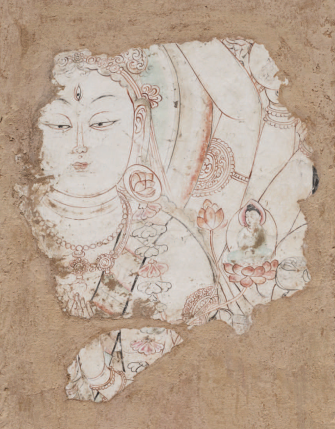Sharing the Silk Road's treasures
By LI CHUNYAN in Paris | China Daily Global | Updated: 2024-10-21 08:39

Representative murals
Curator Zhang Jian emphasized that the exhibition follows a logical narrative of time and space, using murals as important physical artifacts to weave together a cultural Silk Road. The murals vividly reflect the social customs, ethnic transitions, ideological concepts, and other cultural phenomena of their time, Zhang said when he highlighted three works that best represent the exhibition.
The first, Procession of Zhang Yichao in Cave 156 of the Mogao Grottoes, vividly depicts the majestic momentum of Zhang Yichao leading an army to fight against the Tubo kingdom and recover Hexi area in northwestern China. The painting provides insight into the ceremonial practices of the Tang Dynasty (618-907) military, as well as the era's cultural and ethnic diversity.
The second, Music and Dance Performance in Yulin Cave 25 from the Tang Dynasty features lively figures, delicate lines, and rich colors, capturing the essence of Tang Dynasty music and dance. It reflects the cultural integration and aesthetic tendencies of the era while providing a glimpse into the dynamic social landscape of the time, Zhang said.
The third, Thousand-hand Guanyin from the Damagou Buddhist Temple Remains in Hotan, Xinjiang Uygur autonomous region is unlike the other pieces, which are replicas of murals from original sites. This piece is a copy of a mural that is currently preserved in the Hotan Museum. The Damagou Buddhist Temple, which dates back to the Southern and Northern dynasties (420-581), is the smallest known Buddhist temple from the medieval period, both in China and globally.
In this particular piece, Guanyin has a full face, slightly arched eyebrows, a small mouth, a small nose, long and slender eyes that are half-open, gazing slightly downward with the corners of the eyes slightly raised, and a vertically open eye in the middle of the forehead. One of her left hands holds a moon, featuring a rabbit pounding medicine, while one of her right hands holds a spherical object, likely the sun. The mural's elegant colors and harmonious lines reflect the distinct style of Khotanese Buddhist art from this period.
























